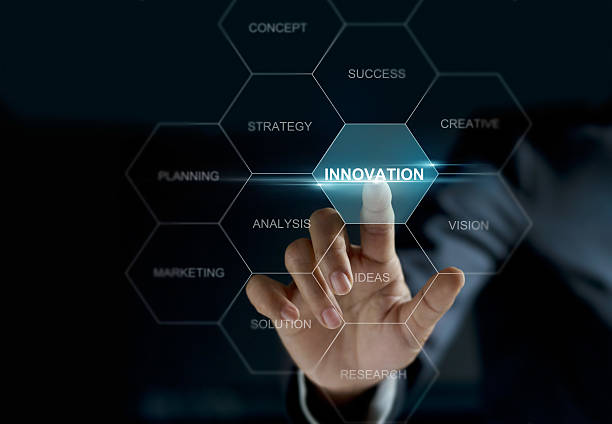In a world characterized by rapid change and increasing competition, innovation is no longer an organizational luxury or an optional extra that can be postponed, but rather a fundamental pillar of companies’ survival and market continuity. Organizations that embrace innovation at the core of their operations not only achieve growth, but are also able to adapt to disruption, lead change, and achieve a sustainable competitive advantage.
However, many leaders face significant challenges when trying to transform innovation from theoretical concept to practical practice. Many organizations stumble due to a lack of vision, a weak corporate culture that supports experimentation, or a lack of resources and technology.
So, how can companies move from uncertainty to market leadership? And how can they turn disruption into an opportunity for growth?
In this article, we will explore the role of innovation in organizational success and present practical strategies to help companies achieve excellence by implementing effective and continuous innovation systems.
First: The importance of innovation in the modern business environment
Innovation has become one of the most important measures of excellence in the business environment. It goes beyond inventing new products, but also extends to improving processes, redefining the customer experience, and designing flexible business models that adapt to accelerating digital transformations.
1. Innovation as a driver of competitive advantage
Innovative companies are able to deliver solutions faster and more effectively than their competitors. Through innovation, organizations can discover new market opportunities and reshape value chains in more efficient ways.
2. Improving customer experience
Innovation can radically change the way customers interact with a product or service. Companies that invest in understanding customer needs can build personalized experiences that increase satisfaction and loyalty.
For example, Netflix wasn’t the first to offer visual content, but it changed the way people consume it through its intelligent subscription model and predictive analysis of viewer behavior.
3. Enhancing operational efficiency
Modern technologies, such as artificial intelligence and the Internet of Things, help automate processes and reduce operating costs. Companies that implement these technologies increase productivity and reduce human error.
4. Achieving sustainability and long-term growth
Innovation is the foundation for building a sustainable business model. Companies that integrate innovation into their strategy are better prepared to address future market and environmental challenges.
Second: Where does the innovation journey begin?
Innovation doesn’t happen by chance; it requires a clear management system and a supportive internal culture.
The first step begins with leadership that believes that innovation is not the responsibility of a specific department, but rather a collective responsibility that includes everyone.
1. Adopting a culture of innovation within the organization
Culture is the seed from which innovation grows. An organization that encourages employees to think freely and constantly experiment achieves exceptional results.
How can this culture be built?
- Encourage employees to brainstorm ideas through brainstorming sessions or internal idea platforms.
- Provide incentives and rewards to employees who propose new solutions.
- Accept failure as an opportunity to learn, not a reason for punishment.
- Promote the values of cooperation and diversity because creative ideas are born from differences in viewpoints.
For example, Google relies on the “20% Time” principle, where employees are allowed to spend 20% of their time developing their own ideas. This policy was behind the creation of products like Gmail and Google Maps.
2. Benefit from digital transformation
Digital transformation is no longer just a technical development; it is a strategic lever for corporate innovation.
Technology enables companies to understand the market accurately, make data-driven decisions, and improve services in an unprecedented way.
Examples of digital innovation:
- Amazon: Uses artificial intelligence to anticipate customer needs and improve inventory management, reducing delivery times and increasing customer satisfaction.
- Starbucks: Relies on data analytics to improve customer experience and personalize offers based on customer preferences.
How can companies benefit from digitization?
- Using big data analytics to understand market trends.
- Applying smart automation to improve operational efficiency.
- Adopting artificial intelligence and machine learning to personalize customer experience and improve services.
3. Developing flexible and innovative business models
In volatile markets, no single model can be relied upon forever.
Business model innovation means finding new ways to deliver value to customers, whether through pricing, distribution, or the experience itself.
The most prominent global innovative models:
- Subscription Model: Like Spotify and Netflix.
- Sharing Economy: such as Uber and Airbnb.
- Digital platforms (Platform Model): such as Alibaba and Amazon, which bring together merchants and customers in a single digital environment.
The question organizations should ask:
“Does our current business model deliver the most value to our customers? If not, how can we change it?”
4. Building strategic partnerships to achieve growth
Innovation doesn’t happen in isolation. Partnerships with external parties can open new horizons for companies.
Types of innovative partnerships:
- Collaborate with startups to quickly test new ideas.
- Establish alliances with universities and research centers to develop advanced solutions.
- Launch open innovation programs that engage customers and suppliers in generating ideas.
For example, Tesla is partnering with battery and renewable energy technology companies to accelerate the development of more efficient electric vehicles.

5. Implementing the Innovation Management System (ISO 56002)
Random innovation is not enough to achieve leadership, so organizations need a structured system to manage it.
This is where
ISO 56002
comes in, providing a global framework for managing innovation systematically and sustainably.
What does this standard provide?
- A clear mechanism for generating ideas and turning them into executable projects.
- Tools to evaluate innovation performance and measure its impact on organizational goals.
- A management structure that ensures the participation of all levels in the innovation process.
Implementing ISO 56002 helps organizations move from “random experimentation” to “sustained strategic innovation,” ensuring continuous improvement and success.
6. Challenges facing companies on the path to innovation
Innovation is a complex process that requires patience and resources. Some of the most significant challenges include:
- Resistance to change by employees or management.
- Lack of funding to support innovative projects.
- Lack of inspiring leadership that directs innovation towards strategic goals.
How can it be overcome?
- Build a transparent communication environment that explains the importance of change to everyone.
- Adopt crowdfunding or partnerships to support new ideas.
- Empowering inspiring leaders who encourage calculated risk-taking and celebrate success.
7. Lessons from companies that have succeeded in innovation
Netflix: Turning disruption in the entertainment market into a growth opportunity through digital transformation.
Tesla: Redefined the automobile through innovation in batteries and design.
Amazon: Not only did it focus on e-commerce, it also created advanced logistics systems that made it a global leader.
8. How can your organization transform from disruption to leadership?
Start from within, not from outside.
- Foster a culture of innovation among your teams.
- Invest in modern data and technologies.
- Learn from the market quickly and respond flexibly.
- Apply international innovation standards such as ISO 56002 to build an effective and sustainable management system.
9. Reins’ role in supporting your entrepreneurial journey
At Reins, we help organizations turn ideas into reality through globally recognized innovation systems.
We provide training and consulting programs to effectively implement ISO 56002 standards, enabling companies to enhance their competitiveness and achieve sustainable growth.
Be the leader who makes change
Innovation is not a luxury, but a tool for survival in a rapidly changing world.
Companies that invest in building a culture of innovation and implementing modern management systems will always be ahead.
From disorder arises opportunity, from chaos is born leadership.










